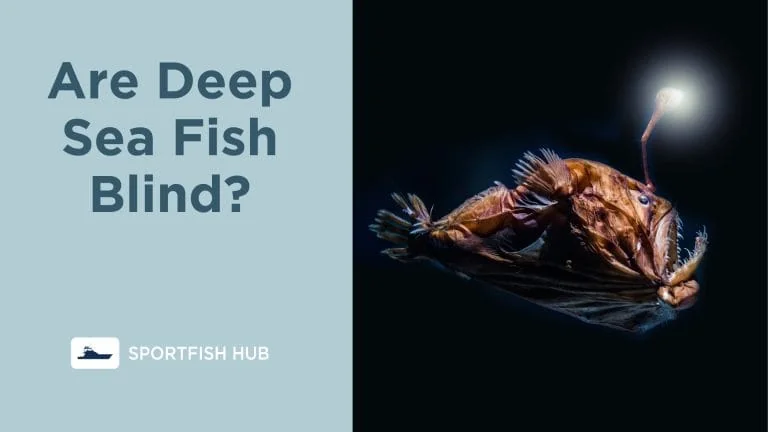Deep sea fish that live in the lightless depths of the ocean are often assumed to be blind, living in constant darkness. However, the reality is more complex. While most deep sea fish have limited vision compared to their shallow water counterparts, they are not completely blind.
You might also enjoy reading: Why do deep sea fish explode at the surface?
How Does Light Change With Depth?
The key factor affecting the vision of deep sea fish is light, or lack thereof. As sunlight penetrates the ocean surface, certain wavelengths of light get absorbed quickly by the water. Red and orange light gets filtered out at around 15-30 meters depth. By 100 meters, most light is a blue/green hue. At 1000 meters down, there is no visible sunlight at all.
Without sunlight, the deep sea is pitch black. The only light sources are bioluminescence from creatures generating their own light, and faint daylight from above.
Adaptations for Limited Light
Lack of light has led to unique adaptations in the eyes of deep sea fish:
- Large, sensitive eyes to capture even faint traces of light. Lanternfish have eyes that take up most of their head.
- Tubular eyes pointing upwards in some species like barreleye to spot silhouettes and bioluminescence from above.
- Retinas with high concentrations of light-sensitive rods, but fewer color-detecting cones.
- Extra reflective layers to bounce light back through retina.
- Ability to see blue/green wavelengths that penetrate deeper.
Not All Deep Sea Fish are Blind
Early researchers believed that most deep sea fish were blind, having lost vision entirely in the perpetual darkness. But recent studies have shown their visual capabilities to be more complex than thought before.
Deep sea fish rely primarily on senses like lateral lines to feel vibrations rather than sight. But most have some basic visual capabilities, just tuned extremely low light:
- Lanternfish likely use vision to avoid predators and find prey.
- Dragonfish may use bioluminescent searchlights to illuminate prey.
- Sperm whales likely aren’t invisible to deep sea fish as some believe.
So while their vision is limited, deep sea fish are not swimming in constant blindness. Their eyes have adapted to make use of faint light sources in their extreme environment. Only fish living in lightless zones thousands of meters down are completely blind.
Conclusion
In summary, the lack of sunlight imposes constraints on the vision of deep sea fish. But evolved adaptations allow them to see at depths we assumed were pitch black. Their vision capabilities are more intricate than early researchers believed.













